With the increasing popularity of solar energy systems, understanding the main components of a solar panel system is essential. Each component plays a crucial role in harnessing and utilizing solar power effectively. This comprehensive guide will explore the key components that make up a solar panel system, including their functions and importance in the overall energy production process.
Contents
- 1 Key Takeaways
- 2 Understanding the Basics: How Solar Panels Work
- 3 Main Components of a Solar Panel System
- 4 Solar Panels
- 5 Inverter
- 6 Solar Battery
- 7 Solar Power Meter
- 8 Exploring Different Types of Solar Panels
- 9 Other Essential Components of a Solar Panel System
- 10 Case Study: Optimizing Solar Energy Utilization with Comprehensive System Components
- 11 Expert Insights From Our Solar Panel Installers About Key Components of a Solar Panel System
- 12 Experience Solar Excellence with Us!
- 13 Conclusion
Key Takeaways
- Understanding how solar panels work, including the photovoltaic effect and the role of inverters, is crucial for harnessing solar energy effectively.
- Exploring different types of solar panels helps you select the most suitable option for your system based on factors like efficiency, space availability, and budget.
- Other essential components, such as batteries, monitoring systems, and mounting hardware, play important roles in optimizing energy production and ensuring the long-term performance of your solar panel system.
Understanding the Basics: How Solar Panels Work
Solar panels are remarkable devices that harness the abundant energy radiated by the sun and convert it into usable electricity. At their core, solar panels rely on the photovoltaic effect, a process through which sunlight is converted into electrical energy. This phenomenon occurs within the solar cells that make up the panels. These cells typically comprise silicon, a semiconductor material capable of generating an electric current when exposed to sunlight.
When sunlight hits the surface of a solar cell, it excites the electrons within the silicon atoms. This excitement causes the electrons to break free from their atoms, creating a flow of electricity. This flow is in the form of direct current (DC), the type of electricity solar panels produce. To make this DC electricity usable for common household appliances and the electrical grid, it must be converted into alternating current (AC) electricity, the standard form of electricity used in homes and businesses. This conversion is achieved through an inverter, which transforms the DC electricity from the solar panels into AC electricity.
The solar cells within the panels are carefully arranged and interconnected to create an array capable of generating significant amounts of electricity. The more sunlight hits the panels, the more electricity they can produce. Factors such as the angle and orientation of the panels, as well as external conditions like shading and weather, can affect their performance. However, technological advancements have improved solar panel efficiency, allowing them to generate electricity even under less-than-ideal conditions. By understanding the basics of solar panels, we can appreciate the power of harnessing sunlight to create clean and renewable energy for a more sustainable future.
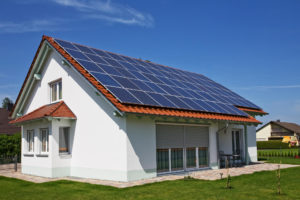
Main Components of a Solar Panel System
A solar panel system comprises several interconnected components that harness, convert, and utilize solar energy efficiently. Each component has a specific function in the energy generation process. Let’s explore the main components in detail to understand their significance comprehensively.
Solar Panels
Solar panels are the primary components of a solar panel system. These panels, also known as PV modules, capture sunlight and convert it into electricity. They are composed of an assembly of PV cells that generate a flow of DC electricity when exposed to sunlight.
Solar panels are typically made of high-quality materials capable of withstanding various weather conditions. The PV cells are encapsulated between layers of protective materials, such as tempered glass and a weatherproof back sheet, to ensure durability and longevity.
The power output of a solar panel is determined by its size, the efficiency of the PV cells, and the amount of sunlight it receives. Panels with higher efficiency can convert more sunlight into electricity, resulting in higher power output.
Inverter
While solar panels generate DC electricity, most electrical devices and the power grid operate on alternating current (AC). The inverter is a critical component that converts the DC electricity produced by the solar panels into AC electricity suitable for use in homes, businesses, and the electrical grid.
The primary function of the inverter is to ensure compatibility between the solar panel system and the electrical devices it powers. It transforms the DC electricity into a usable form that matches the voltage and frequency of the AC power supply.
Inverters come in different types, including string, microinverters, and power optimizers. String inverters are commonly used in traditional solar panel systems, where multiple panels are connected in a series, forming a string. Conversely, microinverters are attached to each solar panel, converting the DC electricity directly at the panel level. Power optimizers are a combination of both, optimizing the power output of each panel and then feeding it into a central inverter.
Choosing the right inverter system depends on system size and design, shading issues, and individual preferences. String inverters are cost-effective and suitable for installations with minimal shading. Conversely, microinverters offer panel-level optimization, allowing for maximum energy harvest, especially in systems with shading or panel mismatch issues. Power optimizers provide a balance between the two, offering panel-level optimization while still utilizing a central inverter.
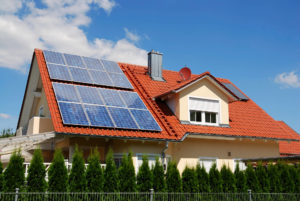
Solar Battery
A solar battery, also known as an energy storage system (ESS), is an optional but valuable component of a solar panel system. It allows you to store excess energy generated by your solar panels for later use, particularly when energy production exceeds immediate consumption.
Solar batteries play a crucial role in maximizing the self-consumption of solar energy and increasing energy independence. When your solar panels generate more electricity than your immediate needs, the excess energy is diverted to the battery instead of being fed back into the grid. This stored energy can then be utilized during periods of low sunlight or at night when your solar panels are not producing electricity.
Integrating a solar battery into your system enhances self-sufficiency, reduces reliance on the electrical grid, and provides backup power in the event of a power outage. It ensures a steady and uninterrupted power supply, allowing you to make the most of the energy generated by your solar panels.
Solar Power Meter
A solar power meter, also known as a production meter or bi-directional meter, is an essential component for monitoring the energy generated by your solar panel system. It measures the amount of electricity your solar panels produce and the excess energy fed back into the grid.
By monitoring the power output from your solar system, you can track its performance, assess energy savings, and potentially receive credits or compensation for the surplus energy you contribute to the grid through net metering programs. Solar power meters provide valuable data on energy generation, helping you gauge the effectiveness of your solar panel system and identify any issues or inefficiencies.
Monitoring your system’s performance allows you to ensure that it is operating optimally and identify any potential maintenance or technical issues promptly. It gives you real-time insights into energy production and empowers you to make informed decisions regarding energy usage, efficiency improvements, and potential system expansions.
Now that we have explored the main components of a solar panel system let’s move on to the different types of solar panels available in the market.
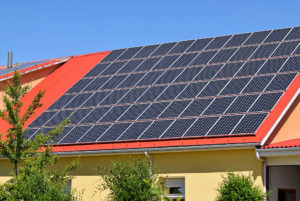
Exploring Different Types of Solar Panels
Solar panels come in various types, each with its characteristics and advantages. Understanding the options available can help you make an informed decision when selecting the most suitable solar panels for your system. Let’s explore some common types of solar panels in detail:
Monocrystalline Solar Panels
Monocrystalline solar panels are known for their high efficiency and sleek appearance. They are made from a single crystal structure, resulting in a uniform dark color and smooth surface. Monocrystalline panels offer excellent power output per square meter, making them ideal for installations with limited roof space. They are highly efficient in converting sunlight into electricity and have a long lifespan.
Polycrystalline Solar Panels
Polycrystalline solar panels are made from multiple silicon crystals, giving them a blue hue. They are cost-effective and offer good efficiency levels. Although slightly less efficient than monocrystalline panels, they are popular due to their affordability, reliability, and widespread availability. Polycrystalline panels are suitable for installations with ample roof space and where cost-effectiveness is a priority.
Thin-Film Solar Panels
Thin-film solar panels are made by depositing thin layers of photovoltaic material onto a substrate, such as glass or metal. They are lightweight, flexible, and easily integrated into various applications. Thin-film panels have the unique advantage of performing well in low-light conditions, making them suitable for installations with limited direct sunlight exposure. However, they typically have lower efficiency compared to crystalline silicon panels. Thin-film panels are commonly used in large-scale commercial projects or where aesthetics and flexibility are prioritized.
Bifacial Solar Panels
Bifacial solar panels have gained popularity in recent years due to their ability to capture sunlight from both the front and rear sides of the panel. These panels have a transparent back sheet, allowing light to pass through and be absorbed by the rear surface of the solar cells. Bifacial panels can generate additional electricity and maximize energy capture by harnessing reflected and indirect light. They are particularly beneficial in installations with reflective surfaces, such as snow-covered grounds or white rooftops.
Exploring the different types of solar panels allows you to consider each type’s specific advantages and characteristics when selecting the most suitable option for your solar panel system. Factors such as available space, efficiency requirements, budget considerations, and aesthetic preferences will influence your decision.
Now, let’s delve into the other essential components of a complete solar panel system.
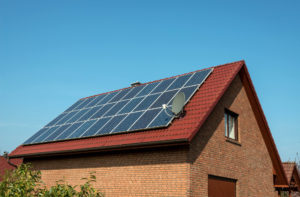
Other Essential Components of a Solar Panel System
In addition to solar panels, inverters, batteries, and power meters, several other components contribute to the functionality and performance of a solar panel system. Let’s explore these components in detail:
Solar Charge Controller
A solar charge controller is crucial in off-grid or hybrid solar systems incorporating battery storage. Its primary function is to regulate the flow of electricity between the solar panels and the battery bank. Solar charge controllers protect the batteries from overcharging or excessive discharge, ensuring their longevity and optimal performance. They monitor the battery voltage and adjust the charging current accordingly, preventing damage or degradation.
Disconnect Switches
Disconnect switches, also known as disconnect switches or circuit breakers, are safety devices installed in a solar panel system to safely disconnect the system from the electrical grid or isolate specific components for maintenance or troubleshooting purposes. They allow you to shut off or isolate the flow of electricity, ensuring the safety of technicians working on the system or during maintenance activities. Disconnect switches are designed to handle the system’s DC or AC voltage and current, providing a safe and efficient means of control.
Wiring and Cables
Wiring and cables are vital components that connect the various elements of a solar panel system. They carry the electrical current generated by the solar panels to the inverter and distribute the AC electricity produced by the inverter to the electrical panel of the building or the grid connection point. It is essential to use high-quality wiring and cables that can handle the system’s voltage and current requirements, ensuring efficiency, safety, and reliability.
Mounting Hardware
Mounting hardware, including brackets, rails, and fasteners, is crucial for securely installing solar panels onto the roof or mounting structure. Proper installation and secure mounting are necessary to withstand weather conditions, ensure stability, and maximize energy production. The mounting hardware should be durable, corrosion-resistant, and capable of withstanding the weight and stress exerted by the solar panels. Properly installed mounting hardware provides a solid foundation for the panels and helps maintain their performance and longevity.
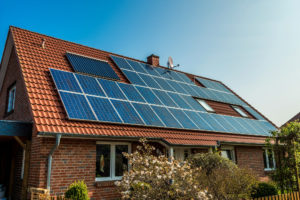
Monitoring System
A monitoring system is an essential component that allows you to track the performance and efficiency of your solar panel system in real time. It provides valuable data on energy production, system health, and potential issues. Monitoring systems can be web-based platforms or mobile applications that provide comprehensive insights into your system’s performance.
Monitoring systems collect data on energy generation, consumption, and system parameters such as voltage, current, and temperature. They enable you to analyze historical data, track energy savings, and identify any inefficiencies or abnormalities in your solar panel system. By monitoring the performance of your system, you can ensure optimal operation, identify potential maintenance or technical issues early on, and make data-driven decisions to improve efficiency and maximize energy production.
Some monitoring systems offer advanced features like real-time alerts, performance comparisons, and remote control. They allow you to stay informed about your system’s performance from anywhere, anytime, empowering you to optimize your energy usage, detect any underperformance, and proactively address any issues that may arise.
Investing in a monitoring system provides valuable insights into your solar panel system’s performance and ensures it continues operating at its best. By monitoring key performance indicators, you can maximize energy production, identify potential savings opportunities, and ensure your solar panel system’s long-term reliability and efficiency.
Case Study: Optimizing Solar Energy Utilization with Comprehensive System Components
Background
At Solar Panels Network USA, we emphasize the importance of understanding and utilizing all key components of a solar panel system to maximize efficiency and energy production. This case study showcases our approach to installing a comprehensive solar energy system for a residential client, ensuring each component was optimized for performance.
Project Overview
Our client, a homeowner committed to reducing their carbon footprint and energy costs, sought a reliable and efficient solar panel system. They wanted to ensure they had the best components to harness, convert, and store solar energy effectively. We aimed to provide a tailored solution that included high-quality solar panels, an efficient inverter, and a robust energy storage system.
Implementation
Comprehensive Component Selection
We began by selecting high-efficiency monocrystalline solar panels due to their superior energy conversion rates and space efficiency. These panels were chosen to maximize the available roof space and ensure optimal energy production.
Next, we opted for a string inverter system. This choice was driven by the client’s minimal shading issues and the cost-effectiveness of string inverters. This setup allowed for efficient DC to AC conversion, ensuring compatibility with the client’s household appliances and the power grid.
Integration of a Solar Battery
Given the client’s desire for energy independence and backup power, we integrated a solar battery into the system. This energy storage system was designed to store excess energy generated during peak sunlight hours, providing a reliable power source during the night or cloudy days. The battery also served as a backup during potential power outages, enhancing the client’s energy security.
Monitoring and Optimization
To ensure the system’s performance and efficiency, we installed a solar power meter. This device allowed the client to monitor real-time energy production and consumption. The monitoring system provided valuable insights into the system’s performance, helping identify any potential issues promptly and allowing for data-driven decisions to optimize energy usage.
Results
Enhanced Energy Efficiency
The carefully selected and integrated components resulted in a highly efficient solar energy system. The monocrystalline panels provided excellent energy conversion, while the string inverter ensured seamless integration with the household electrical system. The solar battery allowed the client to maximize self-consumption of solar energy, reducing reliance on the grid and providing backup power during outages.
Significant Energy Savings
The comprehensive system components led to significant energy savings for the client. The high-efficiency panels and optimized inverter system reduced their electricity bills substantially. The solar battery further enhanced these savings by storing excess energy for later use, ensuring minimal wastage and maximizing the return on investment.
Summary
At Solar Panels Network USA, we demonstrated the importance of each component in a solar panel system through this project. By carefully selecting and integrating high-efficiency panels, an appropriate inverter, and a robust energy storage system, we provided our client with a reliable and efficient solar energy solution. This case study highlights our commitment to optimizing each element of the solar system to ensure maximum performance and energy savings, reinforcing our expertise in delivering tailored solar solutions for our clients.
Expert Insights From Our Solar Panel Installers About Key Components of a Solar Panel System
As a seasoned solar installer, understanding the core components of a solar panel system is crucial. The inverter, for example, plays a vital role in converting DC electricity to AC, ensuring your system is compatible with household appliances and the power grid.
Senior Solar Installation Engineer
Selecting the right type of solar panel, whether monocrystalline or polycrystalline, can significantly impact your system’s efficiency and space requirements. Each type has its advantages, and choosing the best one depends on your specific needs and conditions.
Lead Solar Consultant
Integrating a solar battery into your system can maximize energy independence. By storing excess energy, you can use solar power even when the sun isn’t shining, providing a reliable backup during power outages.
Solar Energy Storage Specialist
Experience Solar Excellence with Us!
Trust in Solar Panels Network USA, where our seasoned experts deliver top-quality solar solutions for homes and businesses nationwide. With a legacy of countless successful installations and a commitment to sustainable energy, we’re your reliable partner in the solar journey. Ready for a brighter, eco-friendly future? Call us now at (855) 427-0058 and harness the power of the sun!
Conclusion
Understanding the basics of how solar panels work and the functions of each component in a solar panel system is essential for anyone considering solar energy. Solar panels, inverters, batteries, power meters, and other components harness the sun’s energy and convert it into clean, renewable electricity.
By exploring different types of solar panels and selecting the most suitable components for your system, you can optimize energy production, increase energy efficiency, and reduce reliance on traditional energy sources. Additionally, monitoring the performance of your solar panel system allows you to track its efficiency, identify any underperformance or maintenance needs, and ensure its long-term effectiveness.
Investing in a well-designed and reliable solar panel system is a significant step toward a greener future. By harnessing the sun’s power, you can contribute to a more sustainable world while potentially saving on energy costs in the long run. Consult with solar professionals, reputable suppliers, and use advanced technologies to design and install a solar panel system that meets your energy needs and aligns with your environmental goals.
About the Author
Solar Panels Network USA stands at the forefront of solar energy solutions, driven by a team of seasoned solar engineers and energy consultants. With over decades of experience in delivering high-quality solar installations and maintenance, we are committed to promoting sustainable energy through customer-centric, tailored solutions. Our articles reflect this commitment, crafted collaboratively by experts to provide accurate, up-to-date insights into solar technology, ensuring our readers are well-informed and empowered in their solar energy decisions.

